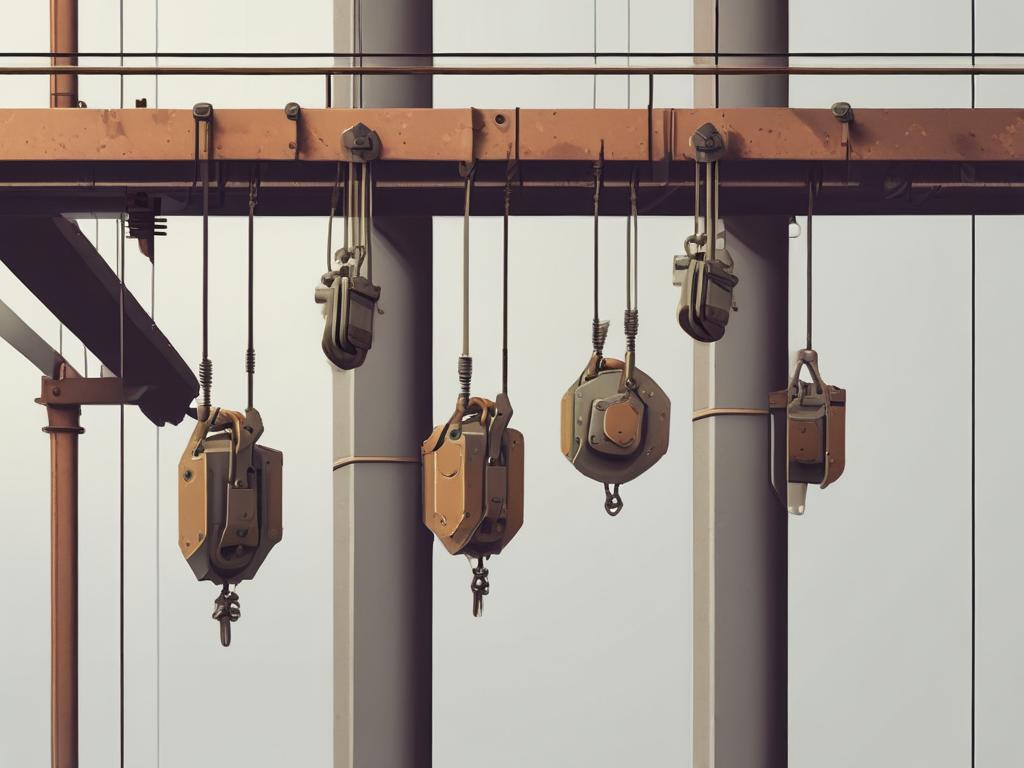
CM hoists have established themselves as reliable tools for handling materials and lifting heavy loads across various industries. These hoists utilize a combination of electric and manual mechanisms to lift and lower materials efficiently, ensuring safety and precision. However, even the most dependable equipment can encounter issues over time. Understanding the functionality of CM hoists is crucial for operators to recognize potential problems and implement effective solutions.
This blog post will discuss CM hoists and highlight some of the most common issues users face in different applications. From mechanical failures to electrical concerns, these hoists can experience various challenges that can hinder their performance.
CM hoists, also known as Columbus McKinnon hoists, are robust and reliable lifting devices widely used in the manufacturing, construction, and entertainment industries. These hoists function by utilizing a mechanism that employs a combination of gears, pulleys, and chains to lift and lower heavy loads safely and efficiently. Depending on the specific requirements of the task, CM hoists can be operated manually or powered electrically, making them versatile tools for workers. Their design includes safety features like limit switches and overload protection to help prevent accidents and ensure optimal performance.
The effectiveness of CM hoists lies in their ability to streamline various tasks, such as material handling and equipment positioning. By converting electrical or manual energy into mechanical energy, CM hoists can lift loads ranging from a few hundred pounds to several tons, accommodating diverse applications.
Operators appreciate the ease of use and reliability these hoists provide, significantly enhancing workplace productivity. However, despite their high performance and durability, CM hoists can encounter issues that impact their efficiency.
CM hoists often encounter a range of issues that can disrupt operations. One prevalent problem is the wear and tear on the hoist’s components, particularly the chain and gears. Over time, these parts can degrade due to constant use, leading to reduced efficiency and increased likelihood of failure. Additionally, environmental factors such as dust, moisture, and exposure to harsh chemicals can accelerate deterioration, causing the hoists to malfunction. Poor maintenance practices further exacerbate these issues, as neglecting routine inspections and lubrication can result in unforeseen breakdowns and costly downtime.
Another common issue with CM hoists is improper load handling. Users may exceed the safe working load limits or unevenly distribute loads, leading to operational instability. This mismanagement can strain the hoist mechanism and lead to catastrophic failure if not addressed promptly. Further, incorrect usage of controls can create safety hazards, particularly in high-risk environments. Ensuring that operators are well-trained and adhere to best practices is essential in mitigating these problems and prolonging the lifespan of the equipment. Businesses can enhance operational efficiency and safety in their respective applications by addressing these common issues.
When dealing with CM hoists, identifying the source of the issue is the first step toward effective troubleshooting. Common problems such as excessive wear and tear, irregular lifting behavior, or unusual noises can often be traced back to specific components. For instance, inspect the chain and hooks for any signs of deformation or damage; replacing worn parts promptly prevents more significant issues. Additionally, regular inspection of the motor and electrical components can ensure that the hoist functions smoothly and safely, reducing the risk of failure during operation.
Preventive maintenance is also critical in addressing frequent issues with CM hoists. Establishing a routine for lubrication and cleaning can help keep the components in optimal condition, allowing for consistent performance. Operators should be trained to recognize unusual signs during use, such as vibrations or hard starts, as these can indicate underlying mechanical problems. By maintaining awareness of the hoist’s operation and conducting regular inspections, users can significantly minimize downtime and enhance safety while maximizing the lifespan of their CM hoists.
Whether you’re confident in your needs or would like an expert opinion, reach out to the experts at T&M Cranes. Our team has been family-owned and operated since 1974 and specializes in overhead cranes, hoists, parts, and ongoing service. Our decades of experience make us confident we can help you with any hoist repair.